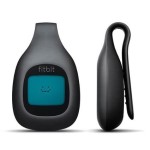 As a person who is obsessed with my Fitbit, I want to infect everyone else with my enthusiasm for activity trackers. I love my Fitbit!! I think everyone can benefit from wearing an activity tracker; young, old, middle-aged, active, inactive, athlete, weekend warrior, office worker, public service employee – I think you get the picture.
As a person who is obsessed with my Fitbit, I want to infect everyone else with my enthusiasm for activity trackers. I love my Fitbit!! I think everyone can benefit from wearing an activity tracker; young, old, middle-aged, active, inactive, athlete, weekend warrior, office worker, public service employee – I think you get the picture.
Sitting less, moving more for better physical and mental health
Everyone needs to move more and, perhaps more importantly, sit less for better health. Sedentarianism (big word for sitting on your bum a large chunk of the day) has been identified as a risk factor for cardiometabolic diseases, regardless of activity levels. That means that even if you hit the gym or the trail regularly, if you also sit a lot your still at risk.
And moving more is associated with all kinds of benefits, including improved cardiovascular health; improved cognition, learning, and memory; better weight management and metabolic function; improved pain management; less anxiety, depression, and anger; and improved mood and mental health.
Fitbits (or activity tracker of your chosing!) can help us move more!
There’s where activity trackers come in! To get us moving and see all those health benefits. They make you aware of just how much your moving during your day. As a pretty active person, I was shocked when some days, usually when I was chained to my desk working, I would have only 1000 or so steps by lunch time. My goal is 8000-10000 a day! (Although I give myself some leeway; 6000 is my bare minimum I shoot for and I’ve been known to head out the door to get a last walk in before bed to hit that mark.
Moving more throughout the day
Though I do try to average out to 10000 a day by the end of the week – usually adding in a hike or two on the weekends to make up for my short days during the week). I set up Workrave on my computer to set up reminders to get away from my desk (I have to take a 30 second break every 10 minutes and one 10 minute break every hour – that’s usually when I’ll get a “mini” walk in), I started adding a quick 15 minute walk in the morning and another lunch (up to my full lunch hour, eating at my desk afterward) in addition to my nightly walks with the boys. And I just felt better. Way better. More focused. More healthy. More active.

I think just becoming more aware of how little you are moving during the course of a day can go a long way toward getting you to move more. I put on a two-month mileage challenge at my old department that was pedometer based (I did it after getting and falling in love with my Fitbit); it was great to see more walking meetings throughout headquarters, more people using their breaks to walk outside, and just hearing from participants how much more they were walking because they realized how little they were walking before. Also, they liked it. They liked getting out of their office and moving around a bit, especially getting outside and getting in some fresh air and sunshine.
We may not move as much as we think we do
The striking thing to me was that some people were at or below 2000 steps per day at the start of the challenge and they had no idea they were sitting and inactive for so long EVERY day they were at work. It was eye opening! As more and more research comes out that demonstrates the deleterious impact of sedentary lifestyles, I think that such devices could go a long way toward improving mental and physical health for everybody.
Breaking up your time sitting is so important,as the greatest health risks have been associated with prolonged sitting (sitting for long bouts of time without changing your position). Just getting up every now and then to move is beneficial, even if it’s not a walk, per se. Stand for a bit. Pace the office. Do some stretches. Just break up the sitting at least once an hour. And invest in your health with an activity tracker; it may be a few bones now but think of how much it can save you in the long run in terms of health costs.
We ALL could move more, even if we’re already active
And as I said at the top of the post, this isn’t just for inactive people. It’s for all you regular exercisers, too. Getting in the national recommended amounts of physical activity each week (150 minutes of moderate activity) might not be enough to overcome the negative health impacts of sitting all day long. This means that the weekend warriors and even those committed to hitting the gym after work might not be doing enough to maximize their health.
For people who sleep 8- hours a night, sit in their cars for an hour or more a day, sit at work for 8-10 hours a day, and then sit on the couch for another couple of hours each night, running a few days a week or being a weekend warrior may not be enough to counteract all that sitting. Consider this: most people only spend about 1-5% of their day in moderate to vigorous physical activity and only .05-1% of that activity is sustained for 10 minutes or longer.
You on board with my Fitbit movement?
So that’s my argument for everyone owning a Fitbit (or other tracker like Nike’s Fuelbands, Jawbone’s UP band, etc). I like the activity trackers over just a pedometer because you can track your progress, track sleep, track food intake, and all sorts of stuff on their associated web pages. If that doesn’t interest you, a less expensive pedometer can provide you your step counts and give you an idea of your activity levels just as well!
Any of these devices can help us get moving more and sitting less, thereby helping us to live a healthier, happier life – our best life!
What do you think? Do you wear an activity tracker? Are you thinking about getting one?
As always, thanks for reading my post, folks!
*Note: If you purchase any of the products I have recommended through any Amazon affiliate links, I do earn a small commission, which helps support my ability to continue sharing my thoughts on movement, nutrition, and health with all of you. Thank you for your support!
References
Duvivier, B.M.F.M., Schaper, N.C., Bremers, M.A., van Crombrugge, G., Menheere, P.P., Kars, M., & Savelberg, H.H. (2013). Minimal intensity physical activity (standing and walking) of longer duration improves insulin action and plasma lipids more than shorter periods of moderate to vigorous exercise (cycling) in sedentary subjects when energy expenditure is comparable. PLoS One, 8(2), e55542. doi: 10.1371/journal.pone.005554
Hamilton, M.T., Healy, G.N., Dunstan, D.W., Zderic, T.W., & Owen, N. (2008). Too little exercise and too much sitting: Inactivity physiology and the need for new recommendations on sedentary behavior. Current Cardiovascular Risk Reports, 2(4), 292-298
